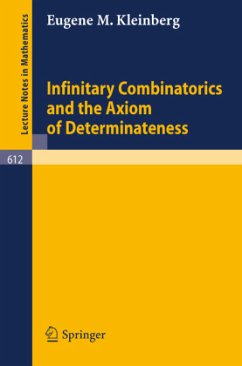
Combinatorics and the Feynman Identity
Applications of Combinatorial Analysis to the Feynman Identity
Versandkostenfrei!
Versandfertig in 6-10 Tagen
32,99 €
inkl. MwSt.

PAYBACK Punkte
16 °P sammeln!
The book investigated the applications of combinatorics and graph theory in the analysis of the Feynman Identity of the partition function of the two dimensional Ising Model.Chapter one gives a general introduction to the partition function of the Ising Model and the Feynman Identity in the language of graph theory.Chapter two describes and proves combinatorially the Feynman Identity in a special case when there is only one vertex and multiple loops.Chapter three introduces a new way to calculate the number of cycles in a directed graph, along with its application in the special case discussed...
The book investigated the applications of
combinatorics and graph theory in the analysis of
the Feynman Identity of the partition function of
the two dimensional Ising Model.
Chapter one gives a general introduction to the
partition function of the Ising Model and the
Feynman Identity in the language of graph theory.
Chapter two describes and proves combinatorially the
Feynman Identity in a special case when there is
only one vertex and multiple loops.
Chapter three introduces a new way to calculate the
number of cycles in a directed graph, along with its
application in the special case discussed in chapter
two to derive the analytical expression of the
number of non-periodic cycles.
Chapter four comes back to the general form of the
Feynman Identity and several combinatorial
identities are derived by introducing special
conditions of the graph and applying the Feynman
Identity under the condition.
Chapter five concludes the work by summarizing the
main idea in each chapter and provides insight for
generalizations in three dimensional Ising Model.
combinatorics and graph theory in the analysis of
the Feynman Identity of the partition function of
the two dimensional Ising Model.
Chapter one gives a general introduction to the
partition function of the Ising Model and the
Feynman Identity in the language of graph theory.
Chapter two describes and proves combinatorially the
Feynman Identity in a special case when there is
only one vertex and multiple loops.
Chapter three introduces a new way to calculate the
number of cycles in a directed graph, along with its
application in the special case discussed in chapter
two to derive the analytical expression of the
number of non-periodic cycles.
Chapter four comes back to the general form of the
Feynman Identity and several combinatorial
identities are derived by introducing special
conditions of the graph and applying the Feynman
Identity under the condition.
Chapter five concludes the work by summarizing the
main idea in each chapter and provides insight for
generalizations in three dimensional Ising Model.












